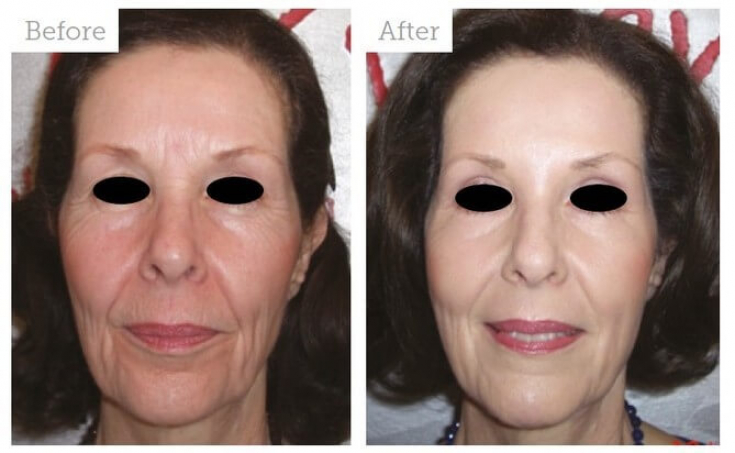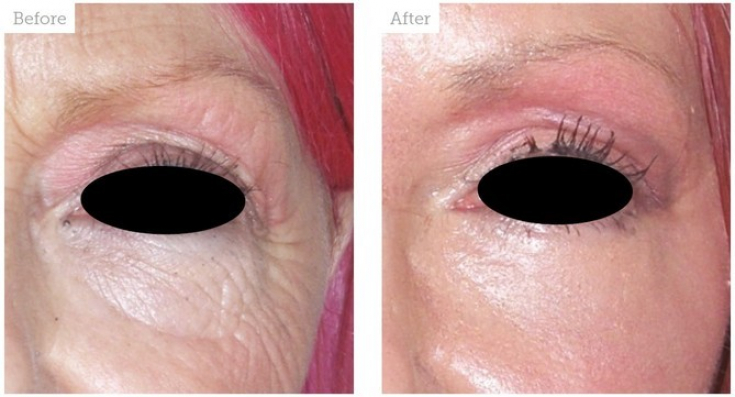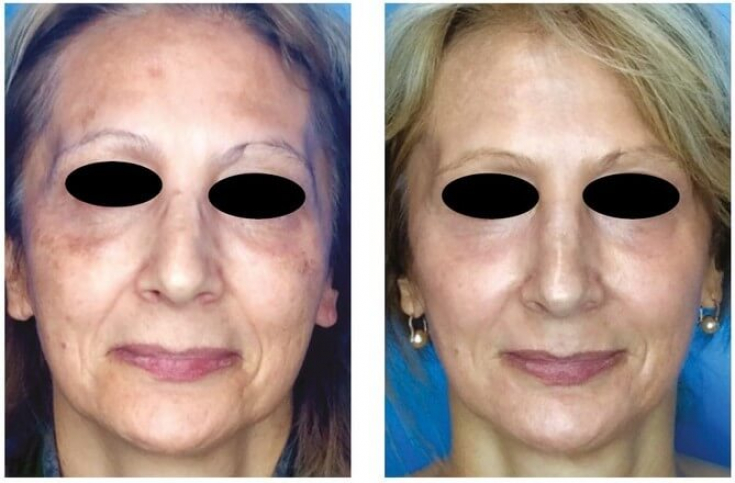On the Internet, you can often find negative reviews about deep chemical peels of the face. Both doctors and their patients are aware of the complications that can occur after this procedure is performed by an insufficiently qualified beautician.
But when handled properly, phenol peeling provides simply amazing results that last for a long time.
This article estet-portal.com provides a detailed overview of the deep action chemical peel procedure, prepared by Dr. Xavier Gudarzian (Xavier Goodarzian).
- What is a deep chemical peel
- Phenol peeling: indications and contraindications
- Preparing for a deep chemical peel
- Protocol for the phenol peel procedure
- Recovery after deep chemical peel
- Recommendations for skin care after phenol peelm
What is a deep chemical peel
Deep is called chemical peeling, which is carried out using phenol.
There are several formulas on the market with different percentages of phenol and croton oil, which increase its penetration. The higher the concentration of croton oil, the deeper the phenol peel acts on the skin.
Targets for phenol peeling can be both individual zones and the face as a whole.
Deep peels are performed exclusively on the face and are not intended for other parts of the body due to the increased risk of scarring. The target can be both separate zones and the person as a whole.
In his practice, Dr. Gudarzyan prefers to work with the entire face, however, in some cases it is more appropriate to work on particularly problematic areas.

Fig. 1:
Deep chemical peeling allows the patient to completely get rid of most of the wrinkles on the face and get a
lifting effectdue to the restoration of collagen and elastin fibers.
Case report: Complications after phenol peeling in the periorbital area Ideal candidates: Fitzpatrick type I-III skin patients with moderate to severe photodamage and/or skin laxity.
Patients with darker skin are at risk for pigmentation disorders.Alternative
should be offered to patients:
post-acne (medium peels based on TCA will be more effective);- with pigmentation disorders (there are safer procedures);
- with fine wrinkles and other minor skin defects (you should also choose less traumatic methods).
-
Contraindications for phenol peeling are:
kidney disease;
liver disease;- pathology of the heart;
- diabetes;
- skin damage
- i.
- Preparing for a deep chemical peel Before a deep peel, Dr. Gudarzyan's patient signs a 20-page consent form containing a detailed description of the procedure, its consequences and proper post-peel care.
An important step in preparing for any aesthetic procedure is, of course,
taking an anamnesis.
Phenol peeling: features of composition and application
As part of preparation of the skin for deep chemical peeling, the author prescribes products containing:
antioxidants;
sun protection factor;- clarifiers;
- retinoids (in some cases).
- Proper
- topical preparation of the skin for phenol peeling, which starts at least 3 weeks before the procedure, improves the results of the procedure and contributes to more effective skin recovery.
A week or two before phenol peeling, the author prefers to botulinum toxin therapy of the entire face in order to prevent the formation of mimic wrinkles in the future.

patient before and 3 months after phenol peeling in the area around the eyes (photo by Dr. Xavier Gudarzyan)
benzodiazepines;
sedative antihistamines;- antivirals;
- antibiotics.
- They should be taken according to
- the developed scheme daily for two weeksb.
Protocol of the phenol peeling procedure The patient, who arrives at least one hour before the procedure, is offered painkillers and benzodiazepines to help them relax. Then, half a liter of saline is slowly given through an intravenous drip, sometimes with additional intravenous NSAIDs, for pain relief and hydration.
A week or two before phenol peeling, the author prefers to perform botulinum therapy of the entire face in order to prevent the formation of mimic wrinkles in the future.
During the procedure, blood pressure, pulse and oxygen saturation are monitored. A small heart rate monitor can also be used to measure heart rate.
Follow us onThe peeling procedure is as follows:
The patient's face is cleaned, disinfected and degreased with alcohol and acetone.Local anesthetic blockade is performed to numb most of the face – this allows the procedure to be performed without sedatives or general anesthetics, which greatly increase the risk of arrhythmia during peeling.
The face is divided into several cosmetic areas and marked.- After that, the peeling process begins: phenol is applied in certain amounts and in a certain number of layers to each area with an interval of at least 10 minutes to ensure detoxification of the phenol and to avoid side effects from the heart.
- For the eyelid area, the author uses two layers, and for the upper lip – 3 or 4.
- After treating the entire face, you can apply an occlusive dressing for 12-24 hours. This will ensure maceration of the epidermis and further penetration of the phenol.
Fig. 3:
What to Expect After a Deep Chemical Peel: Results and Recovery After the procedure is completed, patients are usually unable to open their eyes due to swelling. Therefore, an accompanying person takes them home. At this stage, hygiene is critically , and therefore the author recommends:
avoid contact with pets and small children;
don't touch your face;
Change pillowcases and towels daily.
- The next day, the attendant brings the patient to the clinic, where the occlusive mask is removed and
- bismuth subgalate is applied to the face, which ensures skin healing and protection from environmental influences.
- This semi-solid mask remains on the face for seven days and must not be removed under any circumstances. At this stage, the doctor helps the patient open his eyes.
- The results of a deep chemical peel appear immediately after the procedure, reach a maximum after 3-6 months and last for a long time. Histological changes are observed even decades after peeling.
For the next week, the patient stays at home and rests. The prescribed drugs promote long and deep sleep, any exercise is strictly prohibited. Solid foods and active chewing should be avoided, and therefore liquid or semi-liquid foods should be consumed throughout the week.
Fig. 4:
 patient before and 3 months after full face phenol peel (photo by Dr. Xavier Gudarzyan)
patient before and 3 months after full face phenol peel (photo by Dr. Xavier Gudarzyan)
At the end of the recovery period after a deep chemical peel, the patient applies a thick layer of occlusive ointment on the face overnight, which results in the mask being removed the next day. Of course, in some cases, the mask is not used, the face is only partially treated with phenol, and therefore the recommendations for rehabilitation are adjusted accordingly. Despite the amazing immediate results after a deep chemical peel, it reaches its maximum after 3-6 months, after the restructuring of collagen and elastin.
The results of phenol peeling
are very long lasting, though not permanent. Histological changes in the skin are observed for decades after the procedures
s.
Recommendations for skin care after phenol peel Intense redness and severe skin sensitivity persist for at least six weeks after a phenol peel. To avoid complications such as infections and scarring, the doctor's recommendations must be strictly followed.
As a rule, as the skin adapts, within 10 days after peeling,
skin desquamation.
The most unpleasant complications after chemical peeling and their consequences
The author recommends applying make-up almost immediately after separating the yellow crust – it will hide the redness and protect the skin from ultraviolet radiation.
Dr. Gudarzyan schedules follow-up consultations on the 10th day after the deep chemical peel, as well as 2, 3 and 6 months after the procedure. Total photoprotection (at least SPF 30) and avoidance of sun exposure are required during the first months after phenol peeling due to increased skin sensitivity and the likelihood of burns or pigmentation. According to
magazine.







Add a comment